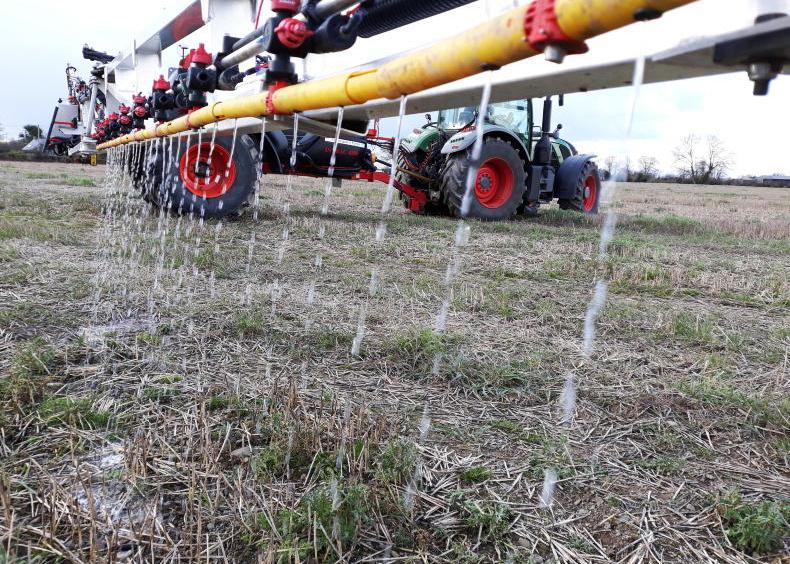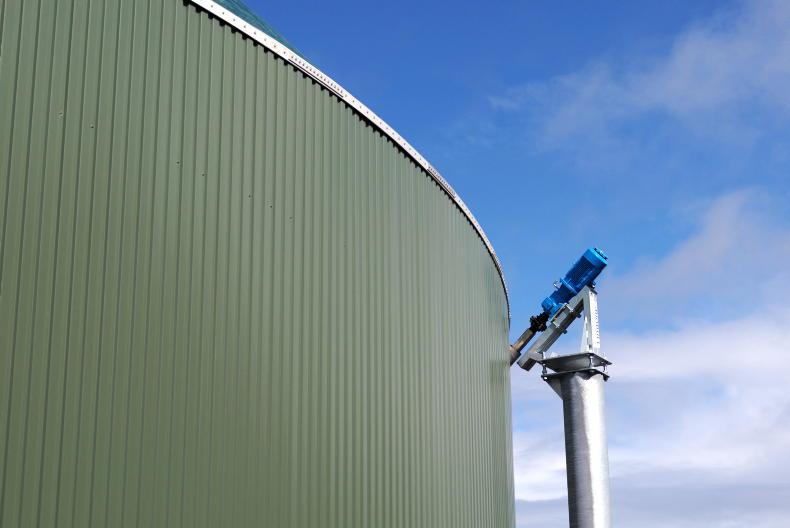New research by Teagasc and the Agri-Food and Biosciences Institute (AFBI) has found that switching from CAN to urea with the urease inhibitor N-(n-butyl) thiophosphoric triamide (NBPT) reduced direct greenhouse gas emissions associated with fertiliser application by 73% on average in grassland. Treating urea fertiliser with NBPT also reduced ammonia losses by up to 78.5%, bringing them in line with those from CAN.
Similar results were observed on spring barley crops. The experimental trial sites included Johnstown Castle and Moorepark for Teagasc and Hillsborough for AFBI.
Commenting on the research, Dr Karl Richards said it highlighted that switching from CAN to urea treated with NBPT saves the farmer money, while simultaneously maintaining yields and nitrogen use efficiency and reducing greenhouse gas emissions. NBPT-treated urea is generally less expensive than CAN.
The research carried out by Teagasc and the AFBI evaluated the effects of fertiliser formulation and organic excreta on the potent greenhouse gas nitrous oxide (N2O) and on the air pollutant ammonia (NH3).
Reducing overall greenhouse gas emissions
EU member states have committed to reduce their overall greenhouse gas emissions by 20% by 2020 to tackle climate change and to reduce emissions of ammonia.
Meanwhile, agricultural production targets have been set in the Republic and Northern Ireland in response to the increased demands for food and abolition of EU milk quotas.
According to Teagasc, to achieve both sets of targets, the farming industry is facing increasing pressure to simultaneously increase yields and improve nitrogen use efficiency while reducing emissions of N2O and ammonia.
Read more
Climate change: farm council to make sure interests of agriculture reflected
New research by Teagasc and the Agri-Food and Biosciences Institute (AFBI) has found that switching from CAN to urea with the urease inhibitor N-(n-butyl) thiophosphoric triamide (NBPT) reduced direct greenhouse gas emissions associated with fertiliser application by 73% on average in grassland. Treating urea fertiliser with NBPT also reduced ammonia losses by up to 78.5%, bringing them in line with those from CAN.
Similar results were observed on spring barley crops. The experimental trial sites included Johnstown Castle and Moorepark for Teagasc and Hillsborough for AFBI.
Commenting on the research, Dr Karl Richards said it highlighted that switching from CAN to urea treated with NBPT saves the farmer money, while simultaneously maintaining yields and nitrogen use efficiency and reducing greenhouse gas emissions. NBPT-treated urea is generally less expensive than CAN.
The research carried out by Teagasc and the AFBI evaluated the effects of fertiliser formulation and organic excreta on the potent greenhouse gas nitrous oxide (N2O) and on the air pollutant ammonia (NH3).
Reducing overall greenhouse gas emissions
EU member states have committed to reduce their overall greenhouse gas emissions by 20% by 2020 to tackle climate change and to reduce emissions of ammonia.
Meanwhile, agricultural production targets have been set in the Republic and Northern Ireland in response to the increased demands for food and abolition of EU milk quotas.
According to Teagasc, to achieve both sets of targets, the farming industry is facing increasing pressure to simultaneously increase yields and improve nitrogen use efficiency while reducing emissions of N2O and ammonia.
Read more
Climate change: farm council to make sure interests of agriculture reflected










SHARING OPTIONS